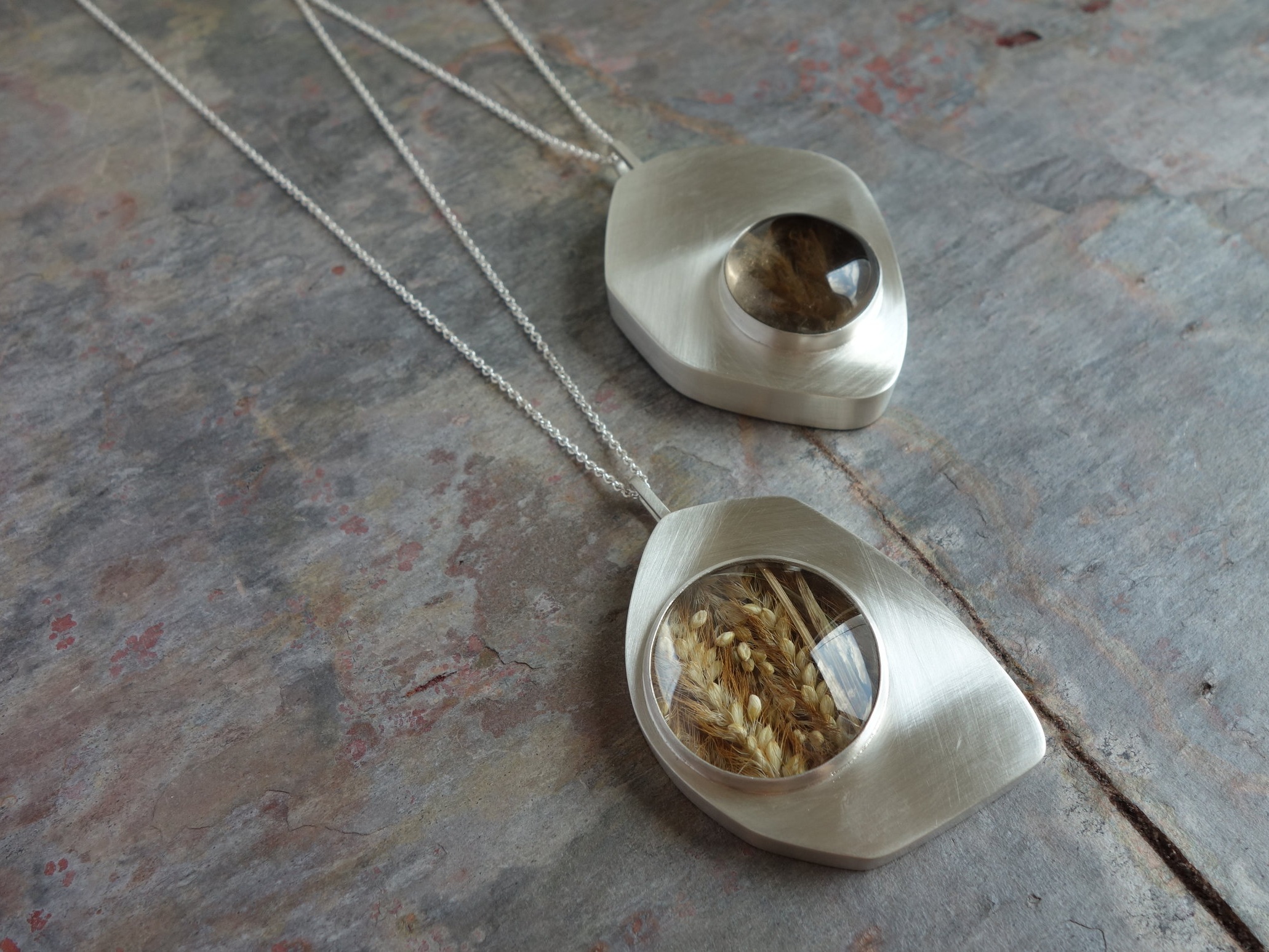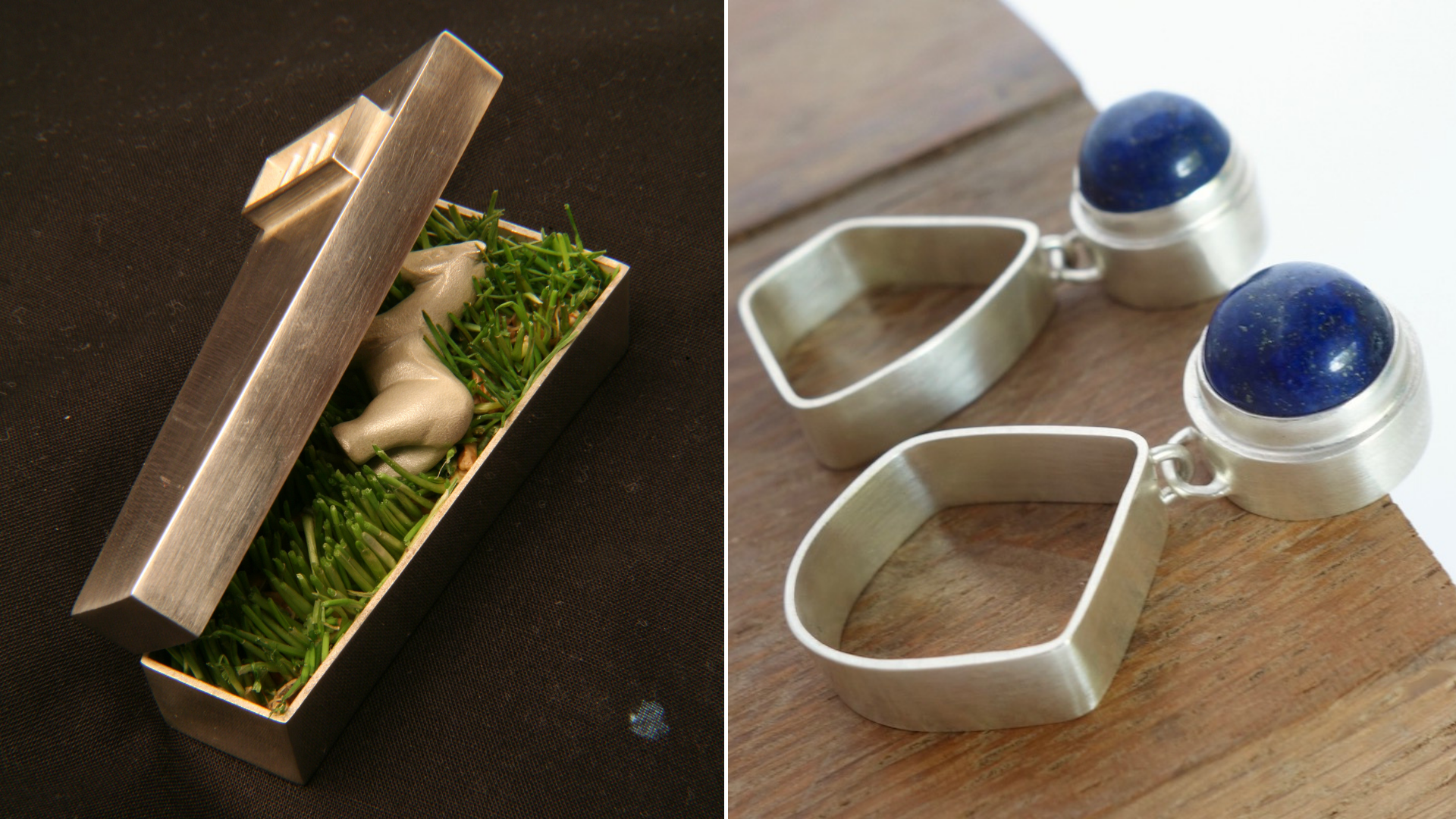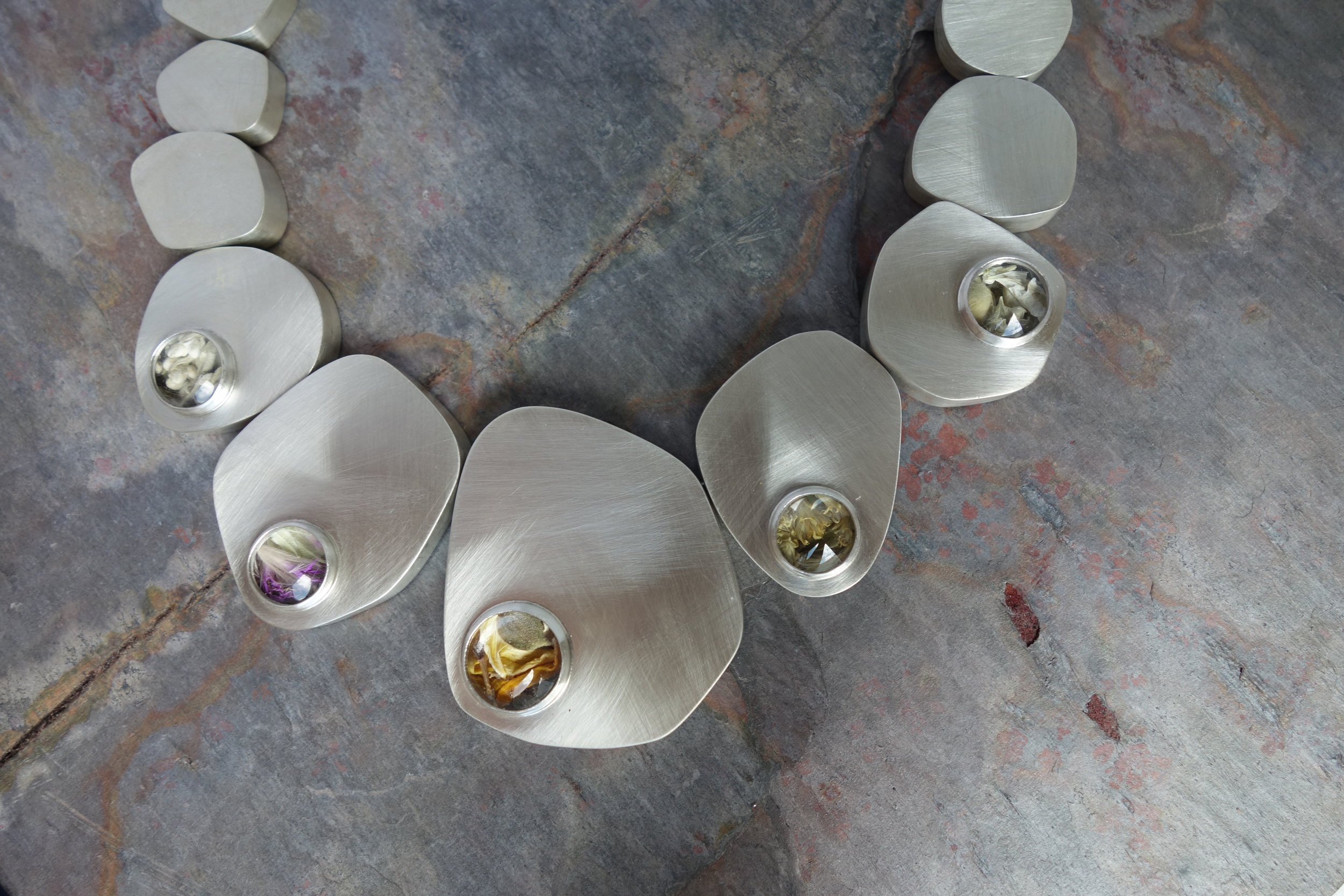I’m so excited to be releasing the Prairie Collection for purchase in the online shop! The pieces included in this collection are quite possibly some of my most favorite pieces I’ve ever made. In this post, I’m going to share with you the process and backstory that makes this collection so special.
Each piece in the collection is a hand-fabricated hollow constructed box. To make a box, you have to create walls, a top, and a bottom. The pieces are all cut from a sheet of silver and bent or formed to the correct shape. Once you have the pieces ready to go, then it’s ‘torch time’, and everything gets soldered together. The process of soldering can get a bit complicated when making a box. I won’t dive into those details here, but suffice it to say it’s not always easy. After you have a box fully formed and created, you can begin the tedious work of filing, sanding, and finishing. Creating hollow forms is a more complicated and time consuming than a simply constructed piece, but the technique gives you the ability to create some very unique shapes and volume that just wouldn’t be possible any other way.
Want to learn a bit more? Check out this post on Ganoksin about how to create a hollow ring.
Want to learn how to create rings yourself? Check out our other studio Alloy Metalsmithing and get on the email list to get notified about our make a ring, stacker ring, and other make and take focused workshops.
Various stages of hollow form construction.
I’ve been fascinated with creating boxes since my college days, and it’s something I’ve explored in my more recent MeritMade work as well. I’ve used the forms to elevate stones and create unique spaces and shapes.
Left: Piece I made in college (2002?). Yes, it is weird, but it’s an example of a hollow form
Right: Lapis earrings (2018)
But, then it hit me! If I’m building boxes, then I should have something in them! At first, I thought it might just be fun to hide things inside like a secret. After further thought however, that didn’t seem very fun since I would be the only one who knew the secret. I really wanted what was inside to at least be known by the wearer. Why not replace the stone on top with a piece of glass or quartz and create a window? TA-DA. The idea was born. And the contents of the box? I had been wanting a way to use the prairie plants I collected. They were the perfect treasure to fit inside the little boxes.
Prairie Collection Earrings
Plant: snow on the mountain
It is an environment where nothing comes between me, the sky, the horizons, and my dreams.
- Ed Butterfield
The prairie is a truly special place. Wide open spaces, thunderstorms that shake your core, and skies so black you can see the whole dang Milky Way. Each of the little bits of plant that you see in this collection are a small part of that amazing place.
Kansas Prairie
Harvested in September 2018, the plants all come from a stretch of prairie in South Central Kansas that has never been farmed. In fact, you can still see the buffalo wallows left behind by the migrating herds. Drought resistant, lovers of sunshine, these plants reign supreme. With few trees to be seen, the grasses and wildflowers are what literally hold the whole prairie ecosystem together. Native Americans and early settlers understood their value and revered them as both food and medicine.
Prairie grasses and flowers harvested and cataloged. (sept 2018)
The following is a list of the plants in this collection. Many of the comments are from a wonderful book, “Wildflowers & Grasses of Kansas: a field guide” by Michael John Haddock. If this topic at all interests you, I highly recommend it as a guide.
Common Sunflower: First cultivated by Native Americans, this plant does it all. Sunflower oil is extracted and used for cooking, paints, soaps, and hair oil. The seeds can be eaten and ground as a flour. Purple and black dye can be made from the seeds and yellow dyes from the flowers. Due to it being one of the lightest natural substances, having a specific gravity of 0.028 compared to 0.028 of cork, even the pith of the plant has been used as life preserver filler.
Snow on the Mountain: It is a relative of the poinsettia. A stand of it can make the ground appear as if it is covered in snow. Despite its beauty, it is poisonous to cattle.
White Sage: Aka wormwood, mugwort, sage wort etc. has been long held sacred by Native Americans. Used as tea, burned, or even brushed across a surface, it has the power to both purify and protect.
Green Foxtail Grass: Not a native plant but more of an opportunist, it provides fair forage value when young, and birds eat the seeds. It is also known as “green bristle brush”.
Indian Grass: It is one of our most important native tall grasses in the prairie ecosystem. It is very nutritious and is readily grazed by livestock. Birds and small mammals consume the seeds.
Blue Grama: Like Indian grass, it is an important part of the prairie ecosystem. It survives extreme drought and is a nutritious plant for grazing. Both Blue Grama and Indian grass can be planted for erosion control due to their extensive and long reaching root systems.
Goldenrod: Native Americans chewed the roots to relieve toothaches. Ground up leaves or boiled leaf extract can be used as an antiseptic lotion. Most importantly, it blooms late in the season and is a valuable source of pollen for bees during that time. Just so you know, goldenrod does not cause allergies. It blooms at the same time as ragweed, who is the actual culprit.
Dotted Gayfeather: The roots of the dotted gayfeather may be cooked and eaten. Native Americans have used a tea made from the root to help with swelling and intestinal pain. It is thought to help stimulate the liver and kidneys. It is worth noting that its amazing root system can grow up to 16 feet deep! Native originally to the prairie, it is now grown worldwide in greenhouses for its ornamental value.
Prairie Collection Statement Necklace
Plants from left to right: snow on the mountain, dotted gayfeather, sunflower, goldenrod, white sage
Boxes are often meant to hold treasures, and I have no doubt that, now that you know a bit more about the grasses and flowers that are part of this collection, you also view them as treasures to be kept and respected. I’m so happy to share a bit more of the process and history of these pieces with you. Shop the complete collection HERE.
As the artist for this collection, it is my preference that these little boxes only hold prairie plants. Thank you for honoring this decision, and know that at this time I am unable to to take custom requests to fill them with something else. If you are interested in a custom piece to commemorate your special place or time, I would love to create something specific just for you. My current custom load is full through January, but if you don’t mind waiting, please reach out to me via email, kelly@meritmadekc.com. I will save you a spot.
xo, Kelly







